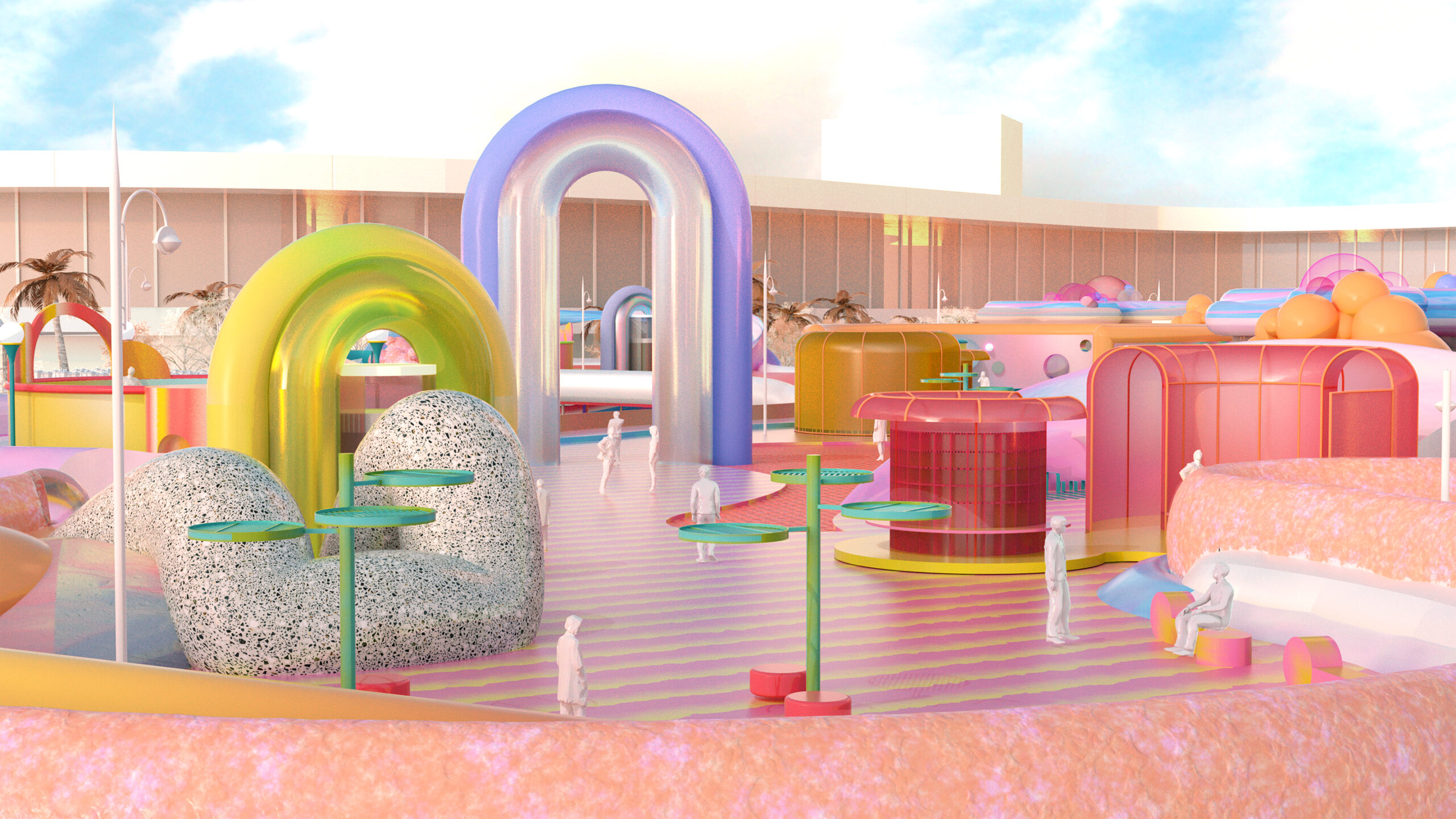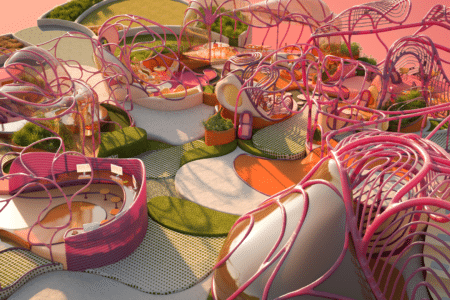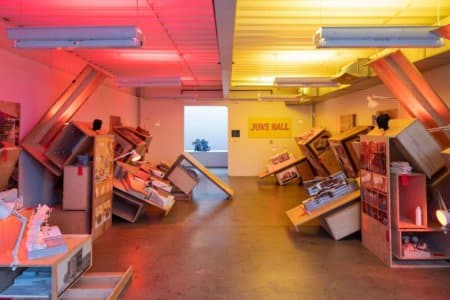For Master of Architecture students at the Southern California Institute of Architecture (SCI-Arc), a graduate thesis is more than a culmination of years of rigorous study, but a testament to the potential of an architect-in-the-making. This journey aligns seamlessly with the institution’s core mission of fostering independent thought, catalysing research, and fuelling innovation within the field of architecture. Both its M.Arch 1 and M.Arch 2 culminate with this year-long endeavour.
From initial spark to final product, the project teaches students the ins and outs of articulating, proposing, and defending their ideas and positions. The structured timeline includes a dedicated thesis preparation period followed by an intensive summer semester for project production and ultimately culminating in the presentation and public exhibition of an individualised architectural stance that pushes boundaries.
Indeed, it is an experience that equips students not only with the technical skills and theoretical knowledge required to succeed but also with the confidence and acumen to shape the future of contemporary architectural practice.
Kaustubh “Sylvan” Kulkarni from India
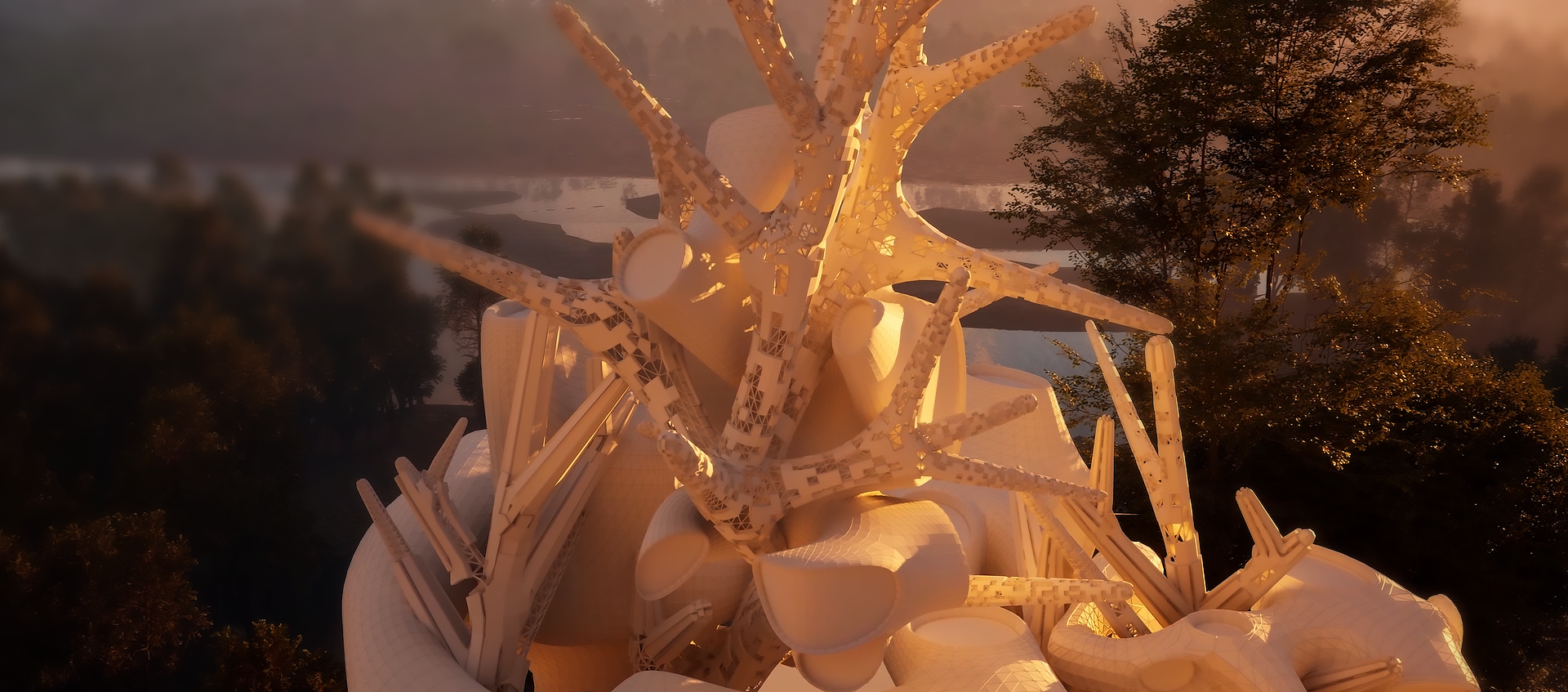
Still taken from Kaustubh “Sylvan” Kulkarni’s thesis film. Source: SCI-Arc
M.Arch 2 student Kaustubh “Sylvan” Kulkarni is using his graduate thesis to explore the intersection of emerging technology and spiritual dimensions of human existence. His intention is clear: to design a narrative-driven experience for end-of-life care, leveraging virtual worlds, artificial intelligence, and neural implants. The project, which, in essence, devices a system, reflects Kulkarni’s belief in the potential of architecture to address the emotional needs of patients facing the possibility of death.
“Contemporary paradigms of healthcare and mortality often fail to address the emotional needs of patients facing terminal conditions,” he explains. “The primary goal of my project was to avoid the same pitfalls through user-specific and individualistic design. This, I believe, is what makes my project architectural.”
In developing this project, Kulkarni embraced cutting-edge techniques, particularly when he was integrating AI within game development software — both of which could create individualised virtual worlds tailored to each person’s unique narrative. Challenges were many, but with the support of mentors and peers, the almost-graduate navigated them successfully.
“For a project that was so emotional and speculative in nature, the hurdles spanned technical barriers, design efficiencies and, of course, psychological and philosophical questions,” he says. “Luckily, my friends provided great insight and a specific sense of humour, which were invaluable to me.”
“My project was also influenced strongly by Elena Manferdini, Damjan Jovanovic and David Ruy — each of their approaches enabled a different philosophical, architectural, technical and emotional aspect of the project’s design and detail.”
Looking ahead, apart from fully bringing his thesis project to life, Kulkarni aspires to continue being an architect whose work resonates deeply with those it’s designed for. With a clear vision and a passion for human-centric design, he’s bound to make a lasting impact.
Jenny Cook and Hanna Park from South Korea
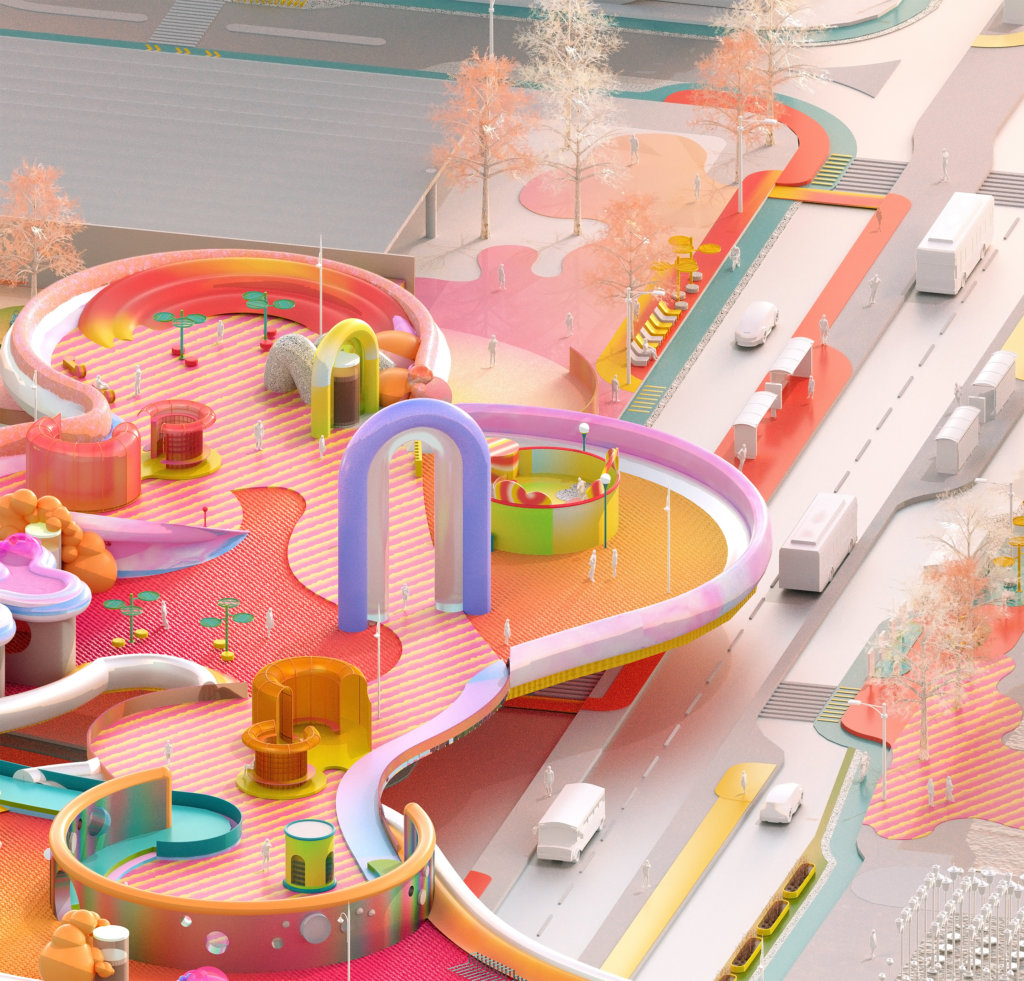
Rendered image from Jenny Cook & Hanna Park’s thesis project. Source: SCI-Arc
Jenny Cook and Hanna Park embarked on their academic journeys at SCI-Arc with equally compelling motivations. One longed to contribute meaningfully to the field, while the other sought to make a profound impact on everyday lives and urban spaces. Hence, their decision to collaborate on their thesis project, titled “PHOTO-Scape”.
Together, the M.Arch 2 students questioned the authenticity of digital renders and sought to bridge the gap between digital and physical realms. They aimed to offer fresh insights into layers of materiality, from digital to physical, culminating in the inclusion of photographed/uploaded material. Central to their design philosophy was the idea of creating a space that entices people to take photographs — this approach aligns with their belief that architecture is fundamentally about creating connections and experiences for individuals.
“Our site was chosen to be LA’s metro D purple line , but in fact, it can be anywhere and everywhere,” explains Cook. “We chose this site for this thesis because it is a perfect location with many museums and foot traffic.”
Innovative techniques played a crucial role in their project. “Through the Midjourney, an AI image generator, we can explore new synthetic materiality that we did not expect,” says Park. “The new materiality from Midjourney allowed us to experiment with creative thinking, which is how this materiality applies to architecture.”
Developing a mock-up was a significant challenge. Their large-scale pavilion with multiple pop-up pods required a unique approach. The duo eventually opted for a smaller-scale physical model that emphasised colour and the photo zone more prominently.
“As I delved into my research for this project, I came to realise the boundless nature of architecture,” enthuses Cook. “My thesis experience was definitely instrumental in honing my personal aesthetic and clarifying my aspirations as a future designer.”

